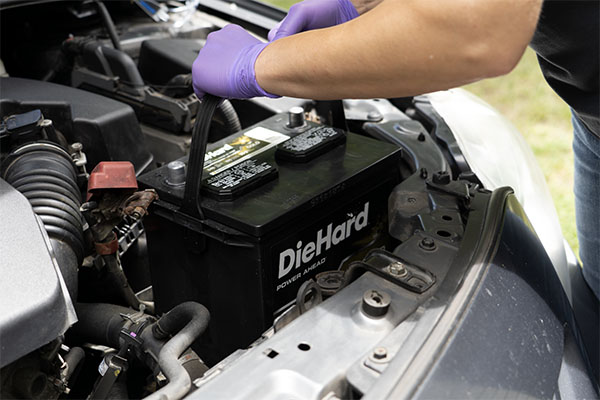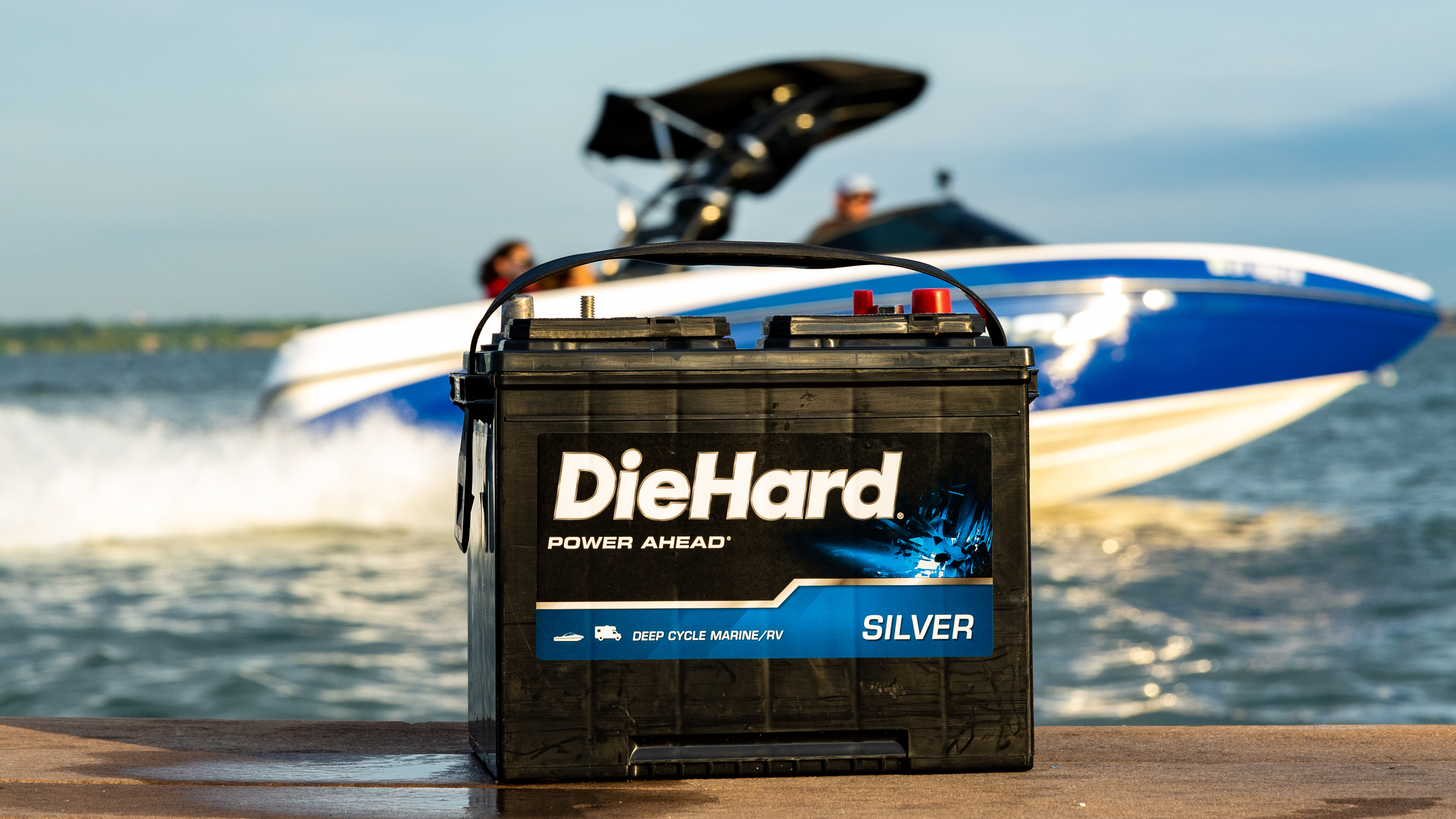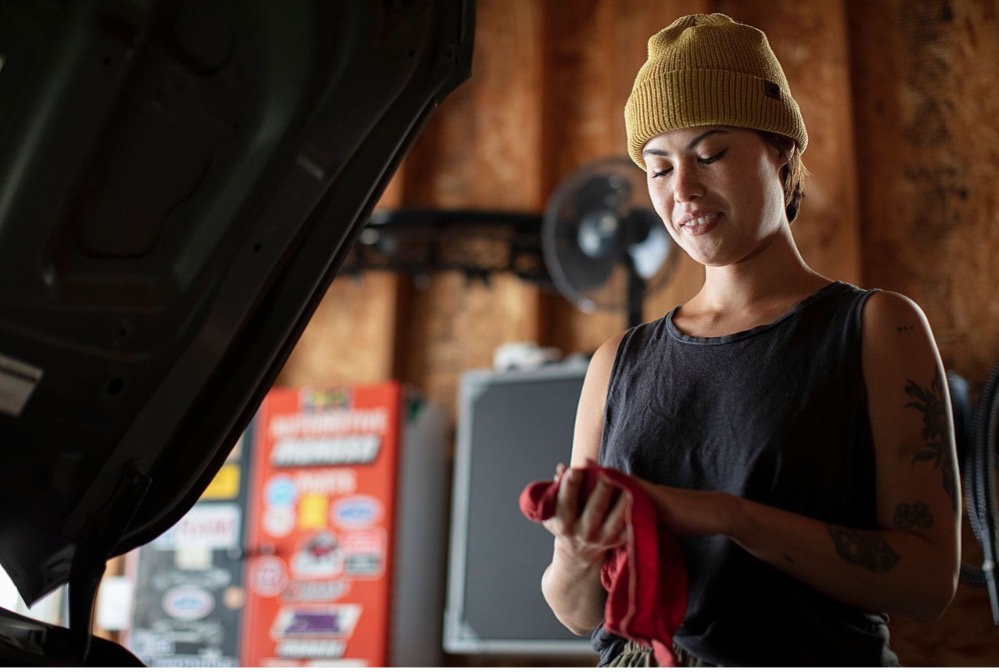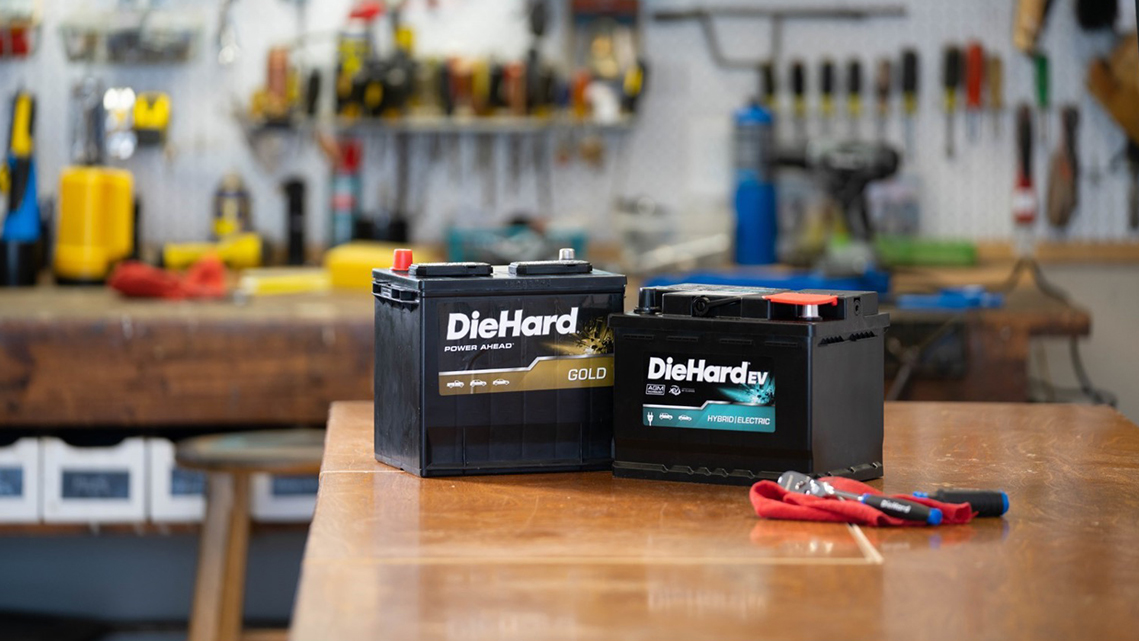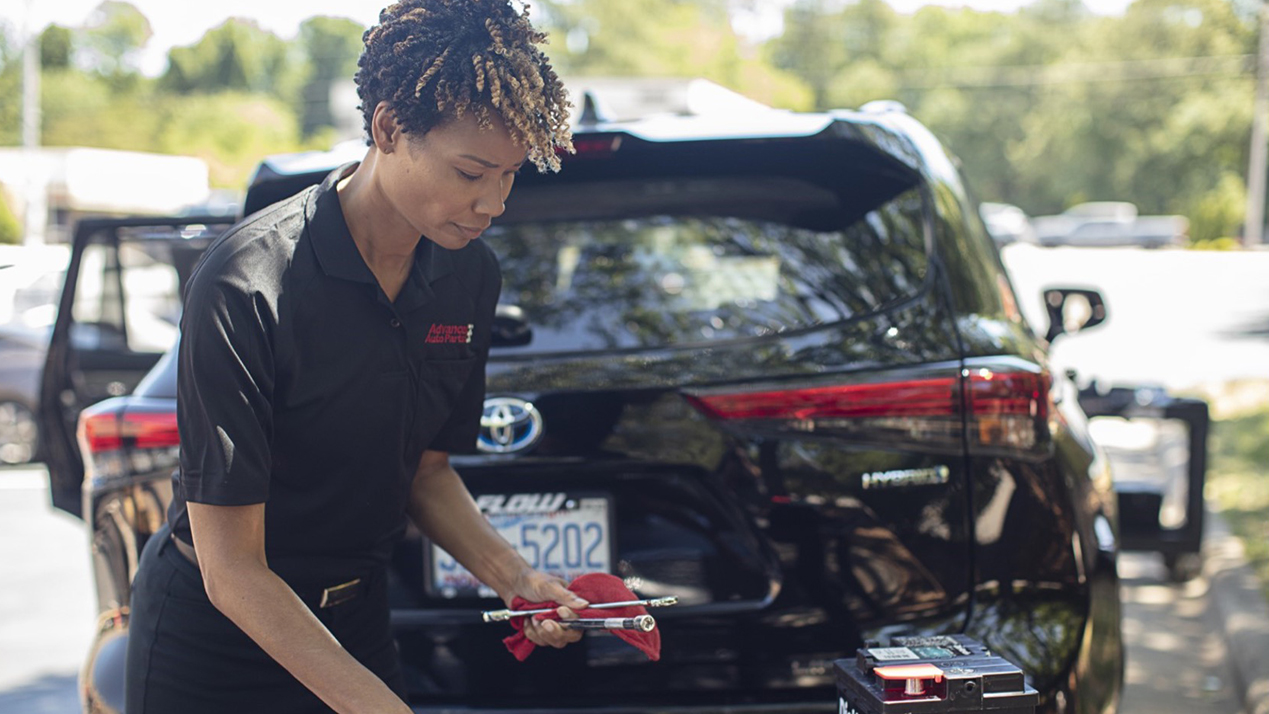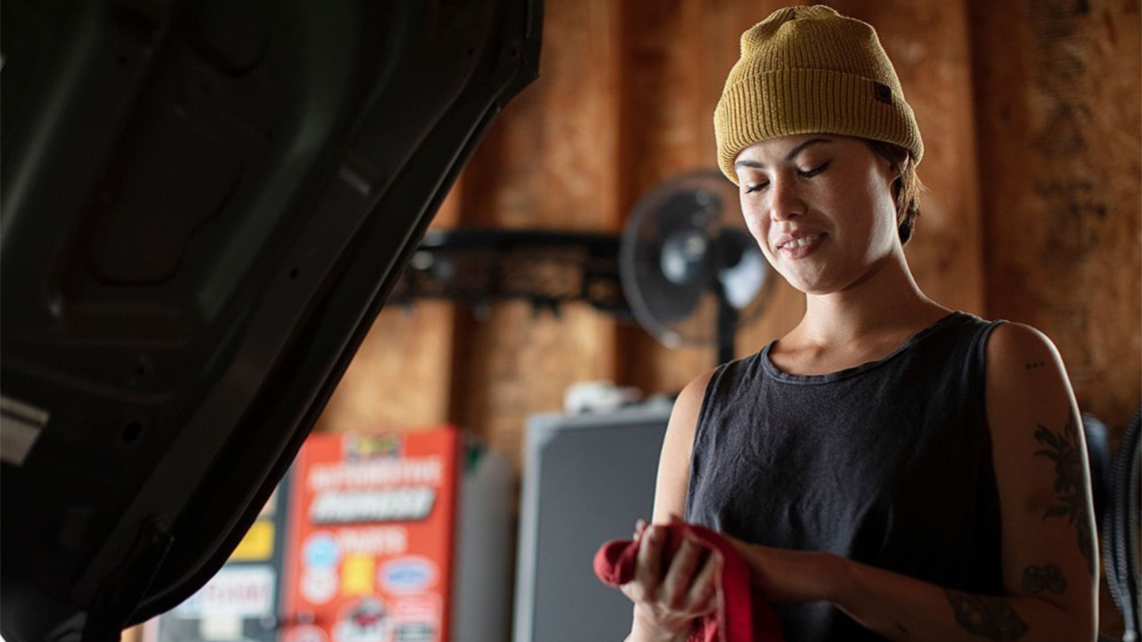
Hybrids are great on gas, but things quickly get confusing when the 12V battery dies. The battery system in a hybrid is quite a bit more complex than your average vehicle, in part because there are two batteries: the high-voltage hybrid battery and the 12V auxiliary battery. The high-voltage hybrid battery can be over 300 volts and 100 amps, which makes charging the 12V using jumper cables a bit intimidating.
Any work on the "big battery" in the hybrid system should be left to the pros, and the easiest way to avoid that system is to stay away from anything connected to an orange cable. On the other hand, the 12V auxiliary batteries aren't actually scary, so follow along as we take the mystery out of jumping a hybrid vehicle's 12V battery.
This is a good project for new DIYers
- Cadillac Escalade/Chevy Tahoe/GMC Yukon hybrids: Passenger side engine bay, by the firewall.
- Ford Escape hybrid: Driver's side of engine bay.
- Honda Civic hybrid: Front of engine bay next to the air intake.
- Honda Insight: A lead-acid battery found on the driver's side of the engine bay (2nd generation) or a small AGM battery located inside the center console, below the infotainment center (3rd generation), and a jump start terminal near the cowl.
- Toyota Prius: In the passenger side hatch, below the cargo floor (1st/2nd/3rd generation) or in the engine bay, driver's side front corner (4th generation).
-
With both engines powered off, connect the positive jumper cable to the positive battery terminal of the drained battery.
-
Connect the other end of the positive cable to the positive terminal on the good battery.
-
Connect the negative battery cable to the negative battery terminal on the good battery.
-
Connect the negative battery cable to a solid ground in the engine bay. Look for an unpainted steel location away from moving parts like the serpentine belt.
-
Start the engine of the second vehicle. Give the accelerator pedal a slight press to raise the RPMs above idle. Maintain this for five minutes.
-
With the second vehicle maintaining engine RPMs, start the disabled hybrid. The gauge lights should display normally, and the vehicle should start.
-
Remove the cables in reverse order. Negative cable on hybrid ground, negative from good battery, then pull the positive from the good battery, and finally remove the positive from the hybrid.
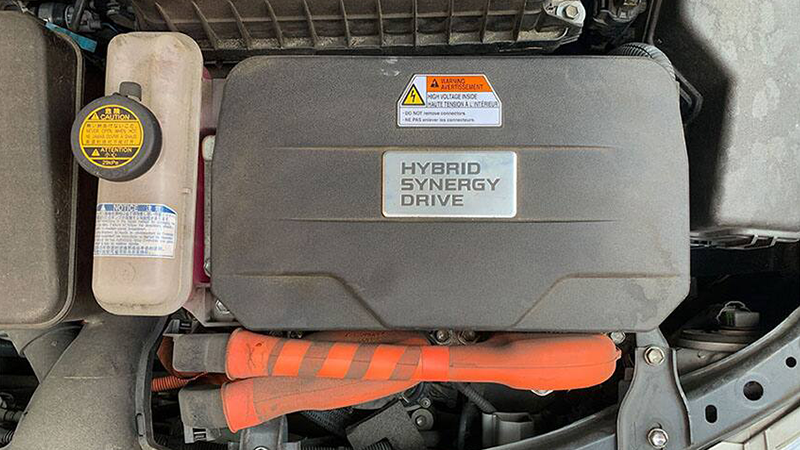
Only professionals should be working on the high-voltage hybrid system, indicated by bright orange cables.
There are a couple different hybrid systems on the road, but they mostly all work in the same way. In addition to the usual internal combustion engine, hybrids store energy in a massive battery bank, and use it to power a series of electric motors. The electric motors reduce the workload on the gas engine, resulting in lower revs and load, meaning less fuel to maintain speed. The hybrid system then recharges the battery through regenerative braking, or by using the engine as a power generator to recharge the battery.
The 12V battery is an auxiliary power system that works similar to non-hybrids. The 12V battery starts the engine and powers vehicle accessories.
Obvious downsides here are the extra weight of the battery and electric motors, which is the main reason why a Prius is over 300 lbs heavier than a similarly sized Corolla. The extra hardware takes up interior space, and adds complexity. A hybrid design also has several positives, including a smaller, lighter engine, and more aggressive use of start/stop systems, which directly contribute to fuel efficiency.
An advanced computer and sensor suite constantly analyzes driving conditions, optimizing the power delivery between the internal combustion engine (ICE) and the hybrid system, letting you drive on just gas, just electricity, or a mix of both as needed.
Once just the realm of economy cars, high-end performance hybrids like the 887-horsepower Porsche 918 are now dominating track records, and there are plenty of hybrid SUVs reliably serving families as daily drivers. There are even rumors of a hybrid F-150 on the horizon, so it's looking like hybrids will become even more competitive and commonplace.
While hybrids have proven reliable, batteries are service parts that wear out repeatedly over the life of a vehicle. After all, whether it's in a cell phone, a laptop or a car, any battery that's rechargeable can only stand so many charge/discharge cycles before it starts to degrade.
If you're lucky, you'll start seeing symptoms of a failing 12V battery before it totally fails. You might get a battery warning light on your gauge cluster. Or maybe electric accessories like the radio, CD player, or navigation system refuse to function. A more common symptom is that the vehicle is slow to start. For vehicles with a push-to-start button, this might look like multiple pushes in order to get it to respond. If turn-key ignition, it might take multiple cranks to start, be unable to crank to start, or you'll only get a series of clicks. You might be left with the typical no-start condition where even the interior lights are not working, meaning it is totally drained.
Another symptom specific to hybrids, the excellent gas mileage becomes just average when the 12V starts to fail. At this point, it's time to test the battery, or have it tested. But first you have to find it.
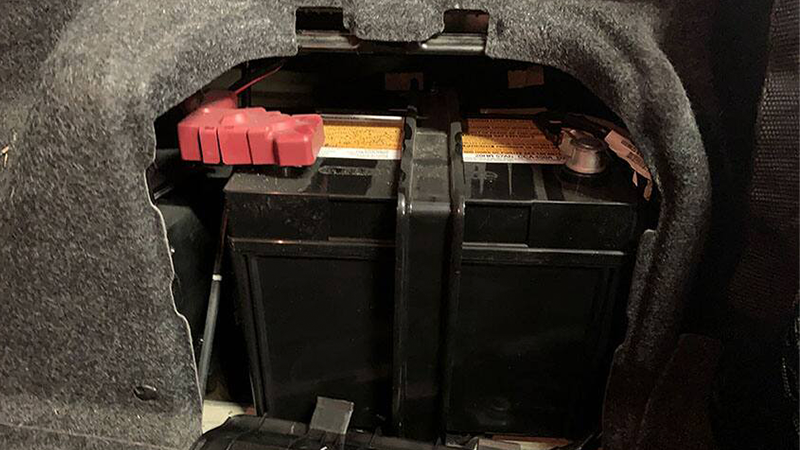
The 12V battery in hybrid vehicles can be located in different places. This hybrid Camry battery is hiding in the trunk.
With a dozens of manufacturers making hybrid models of different types, there are a variety of mounting locations for the 12V batteries. There are different types, too.
Lead-acid is the most common, although some manufactures use vibration-resistant AGM or lightweight lithium-ion. A few examples of battery locations:
If you have a home battery charger, you can plug into 110V power to slowly charge your 12V battery. Charging in this manner is 100% similar to charging an ICE vehicle's battery. Trickle charging is the safest and most effective way to recharge for a long battery life, but make sure the charger is approved to work with your type of battery, as AGM and lithium-ion require specific chargers.
Use the charger's slower rate, 5A or less, to prevent battery damage caused by heat. This could take several hours if the battery discharged to zero, but it's worth it to do it right. If charging with the battery in the vehicle, disconnect the negative battery terminal. Charge in a ventilated location to prevent buildup of hydrogen gas.
If your hybrid's 12V battery is discharged, you can jump start it using jumper cables just like non-hybrids, with some slight modifications. You'll need a second vehicle with a good condition 12V battery, or a fully charged jump starter charging pack. Keep in mind, some hybrids like the gen 3 Prius use an electronic unlocking trunk, so without power, you can't unlock the hatch to gain access to the 12V battery. This is why that hybrid includes a specially designed jump starting terminal located under the hood. Use that terminal in place of the positive battery terminal in the steps below.
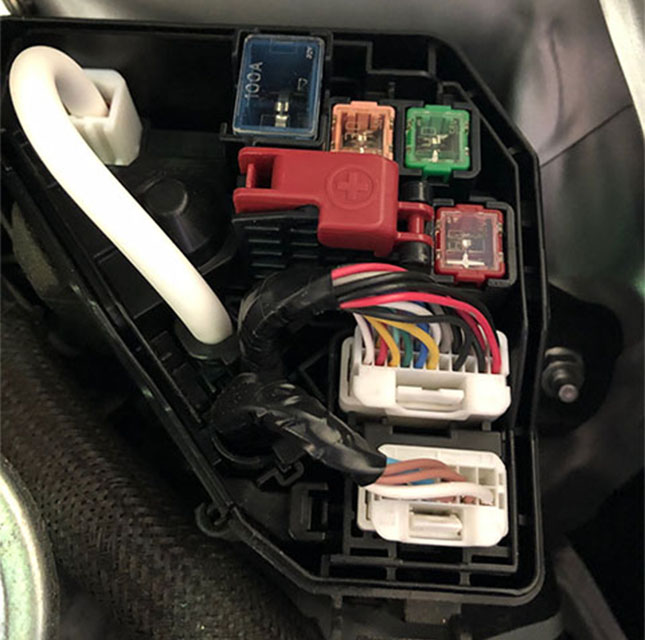
Positive jump start terminal on a Prius, located in a fuse box on the driver's side near the firewall

Using a jump starter pack is similar, but a little easier. Simply connect the positive clamp to the positive battery terminal or jump starting terminal, then connect the negative clamp to the negative terminal or ground as appropriate in your owner's manual. Turn the jump starter on, and attempt to start the vehicle.
Working on a hybrid 12V system isn't any more dangerous than a standard internal combustion vehicle's electrical system. That said, take some precautions so you don't get a surprise. Always replace with a similar type of battery (wet-cell, AGM, Li-Ion, etc), and similar cranking amps. Wear gloves to remove corrosion from terminal cables before installing a new battery.
Ever jumped a hybrid battery? Let us know how it turned out in the comments below.

